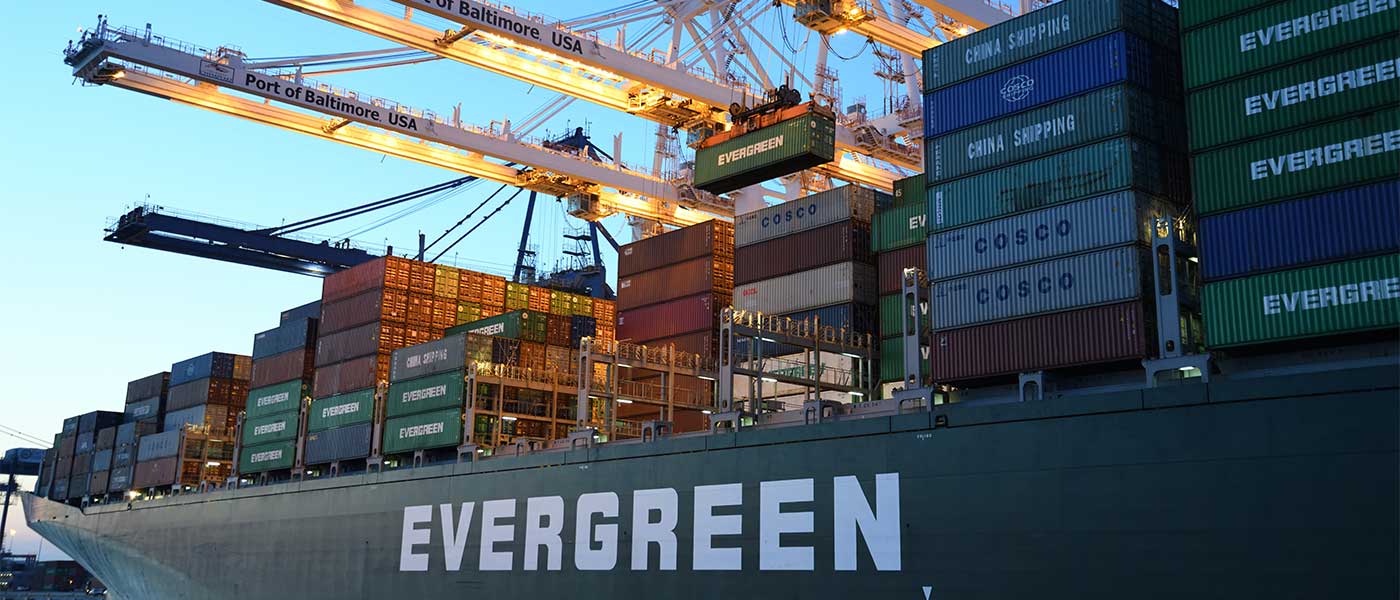Introduction
Logistics and shipping play a vital role in facilitating global trade, enabling the movement of goods across borders and connecting businesses and consumers worldwide. As the backbone of international commerce, the efficient and reliable transportation of goods is crucial for economic growth and prosperity.
In this article, we will explore the multifaceted world of logistics and shipping, diving into various aspects that shape the industry’s present and future. From technological advancements and sustainability considerations to global trade dynamics, customer expectations, talent considerations, and regulatory landscapes, we will delve into the key factors that are transforming the industry and shaping its trajectory.
Technological advancements are revolutionizing logistics and shipping operations, boosting efficiency, and transforming traditional practices. We will examine emerging technologies such as automation, robotics, artificial intelligence, and blockchain, and their impact on operational processes, cost reduction, and customer experiences.
Sustainability and environmental considerations are gaining prominence in the industry as organizations recognize the urgent need to reduce their ecological footprint. We will explore eco-friendly practices, green supply chain initiatives, and the adoption of alternative fuels and electric vehicles to minimize environmental impact and meet regulatory requirements.
Global trade dynamics continue to evolve, driven by geopolitical factors and changing trade policies. We will analyze the implications of these dynamics on logistics and shipping operations and delve into strategies for optimizing supply chains and enhancing operational resilience.
The growth of e-commerce has revolutionized customer expectations, particularly in the realm of last-mile delivery. We will examine the challenges and opportunities presented by e-commerce and explore innovative solutions to meet customer demands.
Talent considerations and the evolving workforce landscape are also critical factors in the industry’s future. We will discuss the changing skill requirements, the importance of upskilling and reskilling programs, and strategies for attracting and retaining top talent.
Lastly, we will navigate the complex regulatory landscape and discuss the policy implications affecting logistics and shipping, including trade policies, customs regulations, and safety standards.
Join us as we embark on a journey to uncover the intricate web of logistics and shipping, exploring the trends, challenges, and opportunities that lie ahead in this dynamic and essential industry.
Technological Advancements
Technological advancements are reshaping the landscape of logistics and shipping, propelling the industry into a new era of efficiency, cost reduction, and enhanced customer experiences. Emerging technologies such as automation, robotics, and artificial intelligence (AI) are at the forefront of this transformation.
Automation technologies are streamlining operations and optimizing efficiency in warehouses and distribution centers. According to a report by Meticulous Research, the Warehouse Automation Market Size is to Grow USD 57.6 Billion by 2031 at a CAGR of 15.3%
Robotics is revolutionizing various aspects of logistics, including picking, sorting, and loading. The global logistics robotics market is projected to reach $4.0 billion by 2028, with a compound annual growth rate (CAGR) of 17.4% between 2023 and 2028, according to a study by MarketsandMarkets.
These statistics highlight the significant growth and market potential of automation and robotics in the logistics industry. By adopting these technologies, companies can optimize their operations, improve productivity, and stay competitive in the rapidly evolving market.

Sustainability and Environmental Considerations
In recent years, the logistics and shipping industry has witnessed a growing focus on sustainability and environmental considerations. As businesses and consumers become increasingly aware of the impact of their actions on the planet, there is a pressing need for the industry to adopt eco-friendly practices and reduce its carbon footprint.
One of the key areas of focus is the adoption of alternative fuels and electric vehicles. According to the International Energy Agency (IEA), the use of biofuels and electric vehicles in the transportation sector is projected to reduce CO2 emissions by 2.3 gigatonnes by 2050. This shift towards cleaner energy sources not only helps reduce greenhouse gas emissions but also decreases dependence on fossil fuels, contributing to a more sustainable future.
Additionally, reducing the carbon footprint is a top priority for many logistics and shipping companies. By optimizing transportation routes, implementing fuel-efficient technologies, and embracing intermodal transportation, organizations can significantly reduce their environmental impact. According to a study by the United Nations Global Compact, adopting sustainable logistics practices can lead to a 20% reduction in carbon emissions.
The industry is also witnessing the rise of green supply chain initiatives aimed at integrating sustainability into every aspect of the supply chain. Companies are exploring innovative solutions such as reverse logistics, where products are returned and recycled, reducing waste and minimizing environmental impact. This holistic approach to sustainability not only aligns with regulatory requirements but also helps build a positive brand image and enhances stakeholder trust.
By prioritizing sustainability and environmental considerations, the logistics and shipping industry can make significant strides toward a greener future. By embracing alternative fuels, electric vehicles, and eco-friendly practices, and implementing green supply chain initiatives, companies can reduce their environmental footprint, comply with regulations, and contribute to the global sustainability agenda. Together, these efforts will pave the way for a more sustainable and environmentally conscious industry.
Global Trade and Supply Chain Optimization
Global trade is a dynamic landscape, constantly evolving and presenting new challenges and opportunities for the logistics and shipping industry. As businesses strive to remain competitive in a globalized world, optimizing supply chains becomes crucial for success.
One statistic that sheds light on the importance of supply chain optimization is that companies with effective supply chain management can achieve up to 15% cost reduction and 50% improvement in delivery performance, according to a report by Accenture. This highlights the significant impact that well-optimized supply chains can have on a company’s bottom line.
To navigate the evolving dynamics of global trade, businesses need to adopt strategies that enhance their supply chain efficiency and responsiveness. This includes optimizing network design to ensure optimal transportation routes and distribution centers, as well as improving inventory management to minimize stockouts and excess inventory.
Moreover, demand forecasting plays a pivotal role in supply chain optimization. Accurate demand forecasts enable companies to align their production, inventory, and distribution strategies, reducing costs and enhancing customer satisfaction.
In the era of big data and advanced analytics, data-driven decision-making becomes imperative for supply chain optimization. The utilization of data analytics, machine learning, and predictive modeling allows companies to extract valuable insights, identify patterns, and make informed decisions. According to a study by DHL and IBM, 81% of industry leaders believe that artificial intelligence and predictive analytics will have a significant impact on their supply chains in the next five years.
By embracing these strategies and leveraging the power of data analytics and predictive modeling, businesses can enhance their supply chain efficiency, improve customer service, and gain a competitive edge in the global trade arena. As global trade continues to evolve, the optimization of supply chains becomes an essential driver of success, enabling companies to navigate the changing tides and achieve sustainable growth.
E-commerce and Customer Expectations
The rapid growth of e-commerce has transformed the way consumers shop and raised the bar for logistics and shipping operations. As more people turn to online platforms for their shopping needs, meeting customer expectations becomes paramount for businesses in the digital age.
The impact of e-commerce growth on logistics and shipping operations cannot be overstated. The rise of online shopping has led to an increased demand for efficient and reliable logistics solutions to fulfill orders and deliver products to customer’s doorsteps.
One of the key challenges in the e-commerce ecosystem is last-mile delivery. With customers expecting faster and more convenient delivery options, logistics providers face the task of optimizing the final leg of the delivery process. Finding innovative solutions to ensure timely and cost-effective delivery is crucial in this competitive landscape.
To meet customer demands, companies are exploring various strategies and technologies. Same-day delivery has gained popularity as it allows customers to receive their orders within hours. Locker systems have also emerged as a convenient option, enabling customers to pick up their packages from secure locations at their convenience. Crowd shipping, where everyday people help deliver packages along their daily routes, is another innovative solution that leverages underutilized resources.
Furthermore, technology plays a crucial role in addressing the challenges and meeting customer expectations in e-commerce. From route optimization algorithms to real-time tracking systems, leveraging technology enhances the efficiency and transparency of logistics operations.
As e-commerce continues to flourish, businesses must adapt and innovate to meet evolving customer expectations. By investing in efficient last-mile delivery solutions, exploring new delivery methods, and embracing technology, companies can provide a seamless and delightful shopping experience to their customers. E-commerce and logistics are inextricably linked, and success lies in the ability to navigate the challenges and leverage the opportunities presented by this digital revolution.
Talent and Workforce Considerations
The logistics and shipping industry is experiencing a paradigm shift in talent requirements and workforce needs. As technological advancements continue to shape the industry, it becomes crucial for businesses to address the changing skill landscape and nurture a skilled and diverse workforce.
One statistic that highlights the need for upskilling and reskilling programs is that by 2025, the World Economic Forum estimates that 50% of all employees will need reskilling. This underscores the importance of investing in continuous learning and development initiatives to equip the workforce with the necessary skills to thrive in an evolving industry.
Technological advancements, such as automation and artificial intelligence, are transforming traditional roles in logistics and shipping. As a result, workers need to acquire new skills, such as data analysis, supply chain optimization, and proficiency in emerging technologies. Upskilling and reskilling programs help bridge the skills gap and enable employees to adapt to changing job requirements.
Furthermore, attracting and retaining top talent is crucial for the success of any organization. To remain competitive, companies are implementing strategies that go beyond traditional recruitment methods. Diversity and inclusion initiatives are gaining prominence, as studies have shown that diverse teams outperform homogeneous ones. Embracing diversity in all its forms promotes creativity, innovation, and a broader perspective on problem-solving.
Additionally, flexible work arrangements are becoming increasingly important in attracting and retaining talent. According to a survey by Deloitte, 75% of respondents cited flexible work arrangements as a critical factor in accepting job offers. Providing options such as remote work, flexible hours, and work-life balance initiatives contribute to employee satisfaction and overall workforce retention.
In conclusion, the logistics and shipping industry must adapt to changing talent and workforce considerations. By investing in upskilling and reskilling programs, fostering diversity and inclusion, and providing flexible work arrangements, companies can build a skilled and motivated workforce capable of embracing technological advancements and driving innovation. As the industry continues to evolve, nurturing talent becomes a strategic imperative for long-term success.

Regulatory Landscape and Policy Implications
The logistics and shipping industry operates within a complex regulatory landscape that encompasses various aspects, including trade policies, customs regulations, and safety standards. Understanding and complying with these regulations is essential for businesses to ensure smooth operations and avoid potential penalties or disruptions.
Trade policies play a significant role in shaping the logistics and shipping industry. Governments around the world establish policies that govern international trade, including tariffs, quotas, and import/export regulations. These policies can have a profound impact on logistics costs, supply chain optimization, and market access. Businesses must stay informed about changes in trade policies to adjust their strategies accordingly.
Customs regulations are another critical aspect of the regulatory landscape. Compliance with customs procedures and documentation requirements is vital to facilitate the efficient movement of goods across borders. Failure to comply can lead to delays, fines, or even the seizure of goods. Implementing robust customs compliance programs and leveraging technologies like automated customs clearance systems can help streamline operations and minimize compliance risks.
Safety standards are of utmost importance in the logistics and shipping industry. Compliance with regulations pertaining to cargo handling, transportation safety, and worker health and safety is essential to protect lives, prevent accidents, and maintain operational integrity. Failure to adhere to safety standards can result in serious consequences, including injuries, reputational damage, and legal liabilities.
Geopolitical factors, such as trade disputes and regional agreements, also have a significant impact on the industry. Trade tensions between nations can disrupt supply chains, increase costs, and create uncertainties. On the other hand, regional agreements and trade blocs can provide opportunities for market expansion and streamlined trade procedures. Businesses must closely monitor geopolitical developments to anticipate potential impacts and devise contingency plans.
As regulatory landscapes evolve, potential policy changes can bring about significant implications for logistics and shipping operations. For example, environmental regulations aimed at reducing carbon emissions may require businesses to adopt greener practices and invest in eco-friendly technologies. Understanding and proactively responding to policy changes is crucial for maintaining compliance, managing costs, and seizing new opportunities.
the regulatory landscape and policy implications in logistics and shipping are complex and ever-evolving. Businesses must stay abreast of trade policies, customs regulations, safety standards, and geopolitical factors to ensure compliance, mitigate risks, and capitalize on opportunities. By actively engaging with regulatory bodies, industry associations, and professional networks, companies can navigate the intricate regulatory framework and position themselves for success in an increasingly regulated environment.
Conclusion
In conclusion, the logistics and shipping industry is a dynamic and multifaceted sector that plays a pivotal role in facilitating global trade. Throughout this article, we have explored various aspects that shape the industry’s present and future, shedding light on the key factors that are transforming the industry and shaping its trajectory.
From technological advancements to sustainability considerations, global trade dynamics, customer expectations, talent considerations, and regulatory landscapes, it is evident that continuous adaptation and innovation are paramount for success in the logistics and shipping industry.
As technology continues to revolutionize operations, companies must embrace automation, robotics, artificial intelligence, and blockchain to optimize efficiency and enhance customer experiences. Simultaneously, sustainability and environmental considerations should be at the forefront, with a focus on adopting alternative fuels, electric vehicles, and green supply chain initiatives to reduce the industry’s carbon footprint.
The ever-evolving global trade dynamics require businesses to optimize their supply chains, enhance responsiveness, and leverage data-driven decision-making to remain competitive. With e-commerce driving customer expectations, last-mile delivery solutions and technological innovations are essential to meet the demands of the digital age.
Talent considerations and workforce development cannot be overlooked, with upskilling and reskilling programs, diversity and inclusion initiatives, and flexible work arrangements becoming imperative to attract and retain top talent.
Lastly, the complex regulatory landscape and potential policy changes present challenges and opportunities for logistics and shipping operations. Staying informed, complying with trade policies, customs regulations, and safety standards, and anticipating geopolitical factors are vital for maintaining compliance, managing costs, and seizing new opportunities.
In conclusion, the future outlook for the logistics and shipping industry is promising. As global trade continues to expand, the industry’s role in connecting businesses and consumers worldwide remains crucial for economic growth and prosperity. By continuously adapting to evolving trends and challenges, embracing innovation, and navigating the regulatory landscape, businesses can position themselves for success in this vital sector. The logistics and shipping industry will continue to shape the world economy and play a pivotal role in the global trade landscape.
About the author
Philip Portman is the founder/CEO of Textdrip, a business texting platform for insurance, mortgage, real estate, and solar sales. He has created several startups from the ground up like; landlineremover.com, argosautomation.com, and recruitdrip.com. He is a leading expert in SMS marketing and automation in digital marketing.









